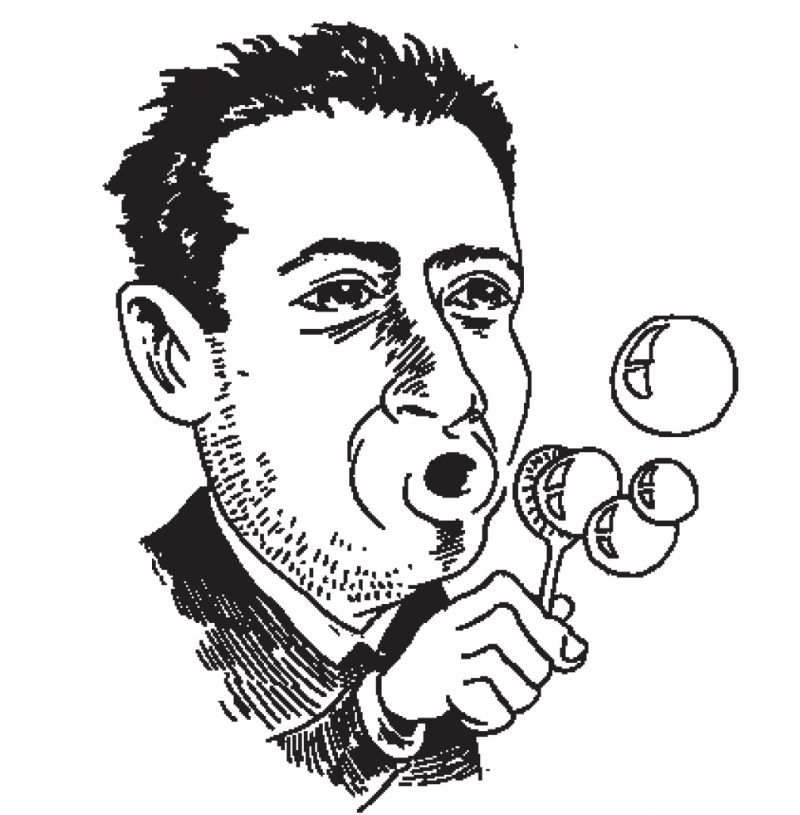Tim Kehoe is a toy inventor living in St. Paul, Minnesota, whose many inventions include the Aquaradio, a device that allows children to talk underwater. The founder of Ascadia Inc., he was recently awarded the title of distinguished alumnus at his elementary school alma mater for his invention of Zubbles, the world’s first nonstaining colored bubble. In the history of bubbles, there has been nothing quite like them: they are nearly opaque colored orbs that do not stain after popping—a marvel that, until now, had been understood to be scientifically impossible.
In a regular bubble, surfactants lessen surface tension and allow the bubble to form. Kehoe learned that a colored bubble would require a dye that was able to bond to surfactants, that would disperse evenly, and—on top of all that—that would not stain once the bubbles burst. The trouble was, this dye did not yet exist. With the help of dye chemist Ram Sabnis, Kehoe arrived at this groundbreaking color technology only after nearly twelve years of failed attempts involving Jell-O, ink, and many, many dollars. Zubbles are scheduled to hit shelves in spring 2008, and will come in purple, pink, blue, and teal. Additional colors will follow, Kehoe explains, if this initial run is successful.
This conversation took place over two cellular telephones in the fall of 2006, braving lots of mysterious but persistent static. At the time, Kehoe was hard at work developing a new kind of search engine—“more like a ‘discovery engine’”—that his wife assures him will be better than Google.
—Rachel Khong
I. “THE MOST BEAUTIFUL THING SHE’D EVER SEEN”
THE BELIEVER: According to a Popular Science article about Zubbles, at one point in your research, you were stained blue!
TIM KEHOE: Ten years into it, we came up with a washable bubble formula. We thought, This is it. Before we did that we decided to run a focus group test, so we brought out twenty-four of my nieces and nephews and my kids. We hired a video crew and a photographer and I went down to the local magic shop and rented these huge, theater-quality bubble machines. They’re great big bubble machines that are controlled by computers.
I remember that morning I was mixing them— I was mixing them in my garage, all this stuff had always been done in my kitchen, and now we were trying to make big batches of it—so I’m out in my garage and a whole bunch of chemicals splash up in my face and I end up throwing up and I stain my eyes blue and my skin was all blue.
BLVR: Are you still blue?
TK: No, it cleared out. It looked pretty bizarre; I...
You have reached your article limit
Sign up for a digital subscription and continue reading all new issues, plus our entire archives, for just $1.50/month.
Already a subscriber? Sign in





